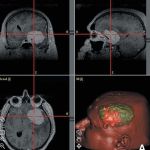 Neurosurgery 68:291–301, 2011 DOI: 10.1227/NEU.0b013e3182011262
Neurosurgery 68:291–301, 2011 DOI: 10.1227/NEU.0b013e3182011262
Traumatic injuries of the craniovertebral junction (CVJ) area are common and frequently the outcome of motor vehicle accidents, falls, and diving accidents.
To define and characterize CVJ traumatic injuries, some international classifications are currently in use, and they are thought and focused on junction bone fracture. However, recent data point out a major important role of the CVJ ligaments and membranes in traumatic injuries with a secondary function of the osseous structures.
Emphasizing the correct role of the ligaments and membranes is extremely important for determining appropriate medical or surgical planning for patients and also to design new CVJ injury classifications.
We reviewed every recent major publication on the ligaments and membranes of the CVJ area. We divided the information into sections concerning anatomy, embryology, biomechanics, trauma, and CVJ bone fractures.
A role of the ligaments and membranes in the traumatic injuries of the CVJ area has often been recognized; but only recently, with the increase in the knowledge of the anatomic and biomechanical junction area, supported by neuroradiological tools (magnetic resonance imaging) and a more detailed traumatic injuries assessment, has the role of the ligaments and membranes been highlighted.
Ligaments and membranes have a pivotal role in each junctional ability and are the key to orienting any medical or surgical indications in this unique area of the spine.







You must be logged in to post a comment.